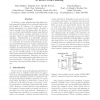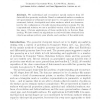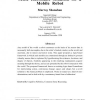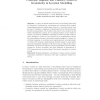340 search results - page 22 / 68 » A World Model for Smart Spaces |
ICRA
2003
IEEE
14 years 25 days ago
2003
IEEE
In Robotics, many path-planning algorithms have been proposed but almost all are evaluated only by their path lengths in PC. However, the evaluation is completely independent of a...
ECCV
2004
Springer
14 years 9 months ago
2004
Springer
We understand and reconstruct special surfaces from 3D data with line geometry methods. Based on estimated surface normals we use approximation techniques in line space to recogniz...
DASFAA
2006
IEEE
14 years 1 months ago
2006
IEEE
In this paper we present a quality model highlighting the completeness of sensor data with respect to its application. The model allows consistent handling of information loss as d...
ETAI
1998
13 years 7 months ago
1998
Any model of the world a robot constructs on the basis of its sensor data is necessarily both incomplete, due to the robot’s limited window on the world, and uncertain, due to s...
KI
2010
Springer
13 years 6 months ago
2010
Springer
Location models are data structures or knowledge bases used in Ubiquitous Computing for representing and reasoning about spatial relationships between so-called smart objects, i.e....




